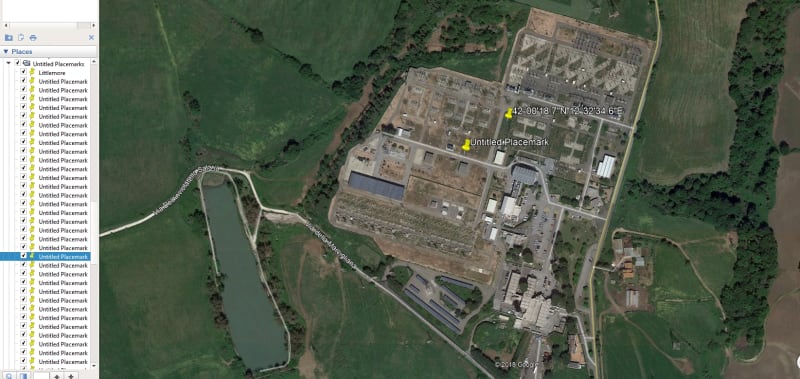Navigation
Install the app
How to install the app on iOS
Follow along with the video below to see how to install our site as a web app on your home screen.
Note: This feature may not be available in some browsers.
More options
Style variation
-
Congratulations MintJulep on being selected by the Eng-Tips community for having the most helpful posts in the forums last week. Way to Go!
You are using an out of date browser. It may not display this or other websites correctly.
You should upgrade or use an alternative browser.
You should upgrade or use an alternative browser.
Grass Growing in Substation 1
- Thread starter Mbrooke
- Start date
- Status
- Not open for further replies.
davidbeach
Electrical
Seems to be a thing outside North America. thread238-440339
- Thread starter
- #3
bacon4life
Electrical
Benefits: Less herbicide to control grass; more vegetated area to absorb rain storms; perhaps easier to drive on.
Challenges: More lawn mowing equipment that may run into equipment; Hopefully the ground grid design accounted the lower resistivity of tall wet grass compared to fractured yard rock. If it has sprinklers to keep it that green, potential for the spray from a broken sprinkler to short out a bus.
Challenges: More lawn mowing equipment that may run into equipment; Hopefully the ground grid design accounted the lower resistivity of tall wet grass compared to fractured yard rock. If it has sprinklers to keep it that green, potential for the spray from a broken sprinkler to short out a bus.
- Thread starter
- #5
davidbeach
Electrical
There's a place for robot lawn mowers.
Where are these "green" substation photos taken? I have seen some photos for substations in Russia and China where it was that green. (I think these countries don't care about copper earthing grid costs since the earthing grids are made of steel there!)
- Thread starter
- #8
Slovenia (Eastern Europe), but honestly I'm seeing it all over the world like India and South America. There are just as many grass substations as gravel substations if not more so by a substantial number.
Answers range from its the same to "grass is better"
Answers range from its the same to "grass is better"
I've seen substations in Bangladesh where cows graze inside the station.
How does the dung get cleaned up? To my understanding, open outdoor defecation is recognized as a world health concern...
CR
"As iron sharpens iron, so one person sharpens another." [Proverbs 27:17, NIV]
-
1
- #13
Grass inside substation is not easily acceptable by utilities across the USA. A few years ago the ground system designed pre the IEEE Std 80 was upgraded and the spec called for keeping intact the green grass between the fence and the control house. This was a major challenger to keep safe the area removing any component that could be touched. The target goal was reduced to meet just the step potential that is less stringent than the touch potential.
Below are a couples quotes from a utility std outside the USA we reference associated to the grass in substation applications:
See also ==>
Below are a couples quotes from a utility std outside the USA we reference associated to the grass in substation applications:
See also ==>
- Thread starter
- #14
it is quite common to have "green" substation here in Italy, as well as in many other european countries.
When the substation is large, the earthing resistance is very low, so that it is not an issue to fulfill the safety requirements for the earth grid, also in presence of grass.
Just a couple of examples, some aerial photos from google.
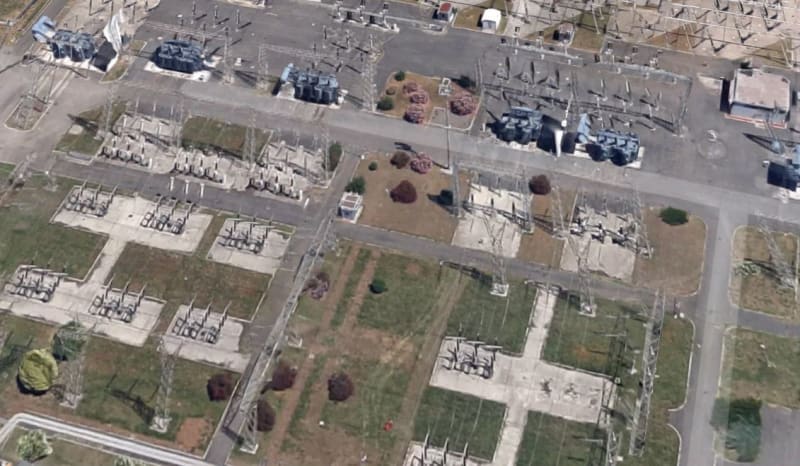
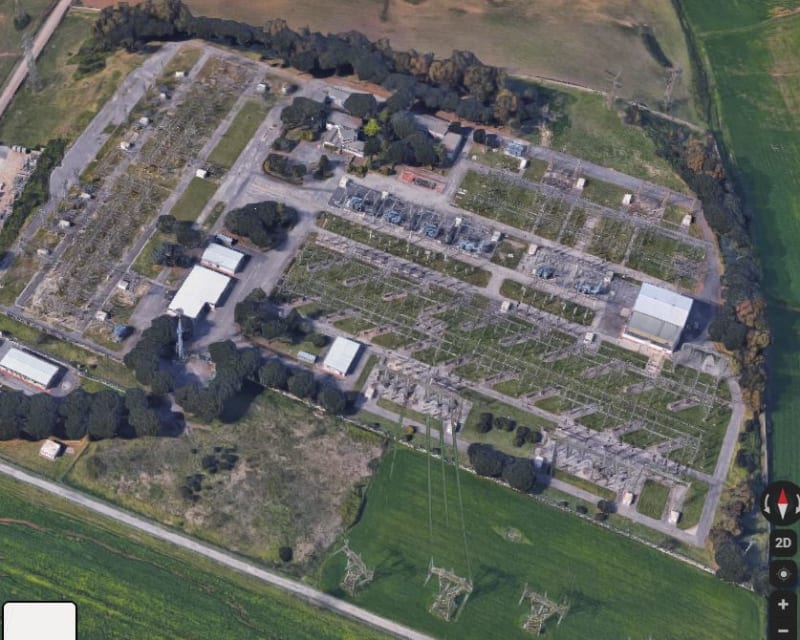
Si duri puer ingeni videtur,
preconem facias vel architectum.
When the substation is large, the earthing resistance is very low, so that it is not an issue to fulfill the safety requirements for the earth grid, also in presence of grass.
Just a couple of examples, some aerial photos from google.


Si duri puer ingeni videtur,
preconem facias vel architectum.
Hi Mikebrook
The amount of metallic conductor buried in the soil depends on what standard is adopted.
For Instance, a typical case following the IEEE 80, is to assume that the shoe resistance plus ground contact resistance is with barefoot (R=0) and a surface layer of 4"-6" of crushed rock with 3000 Ω.m. However, the British and other standard assume for example 4,000 Ohm for footwear resistance. This provides closer performance in term of the amount of metallic conductor embedded in the ground.
There are other practices that use a fix resistance with shoes that varies from a few 100's Ω to MΩ's.
A glance at the impact of a person step on top of a surface with grass with shoes is indicated in the illustration below. Notice that some of the grass curves are comparable with asphalt rated for 10,000 Ω.m (3 times larger than crushed rocks). Also, some information related to step and touch potential equation and graph following IEEE and IEC Std.
I hope this help.
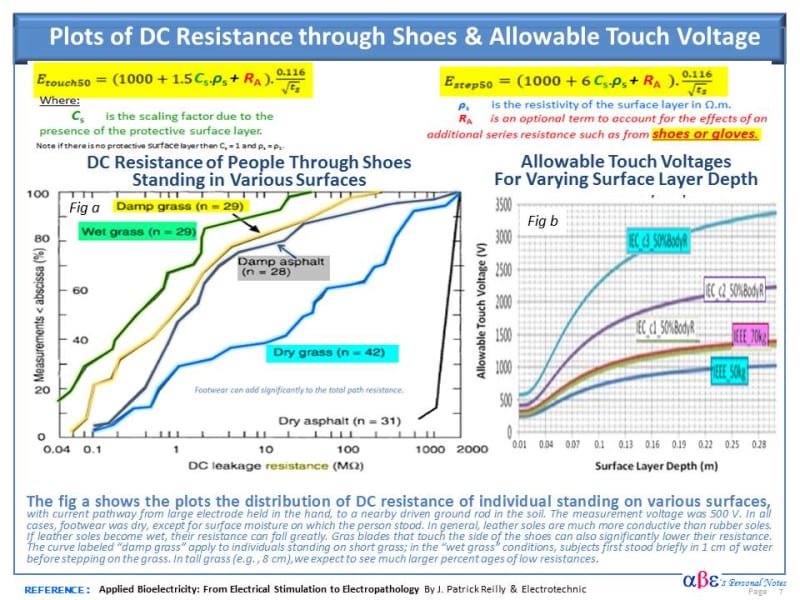
The amount of metallic conductor buried in the soil depends on what standard is adopted.
For Instance, a typical case following the IEEE 80, is to assume that the shoe resistance plus ground contact resistance is with barefoot (R=0) and a surface layer of 4"-6" of crushed rock with 3000 Ω.m. However, the British and other standard assume for example 4,000 Ohm for footwear resistance. This provides closer performance in term of the amount of metallic conductor embedded in the ground.
There are other practices that use a fix resistance with shoes that varies from a few 100's Ω to MΩ's.
A glance at the impact of a person step on top of a surface with grass with shoes is indicated in the illustration below. Notice that some of the grass curves are comparable with asphalt rated for 10,000 Ω.m (3 times larger than crushed rocks). Also, some information related to step and touch potential equation and graph following IEEE and IEC Std.
I hope this help.

- Thread starter
- #17
Mbrooke,
the coordinates are 42°00'18.7"N 12°32'34.6"E.
In large substations the earthing resistance is low enough to avoid significant issues on touch and step voltages.
Generally, a 20 m x 20 m mesh is adopted. Equipment is generally grounded by connecting it to 2 different points of the ground grid, so that adopting a larger meshing would mean to increase the length of the grounding connections.
The earthing systems are designed according to CENELEC 50522 standard, which in turns is based on the current-time and voltage-resistance curves of IEC TS 60479-1. Considering the typical fault clearing time of 0.5 s and 1000 Ohm shoes resistance, it is quite uncommon to have problems inside large substations.
It is more usual to have some issues at the substation boundary, at the edges of the earth mesh or even outside the substation (induced voltages on third-parties).
Si duri puer ingeni videtur,
preconem facias vel architectum.
the coordinates are 42°00'18.7"N 12°32'34.6"E.
In large substations the earthing resistance is low enough to avoid significant issues on touch and step voltages.
Generally, a 20 m x 20 m mesh is adopted. Equipment is generally grounded by connecting it to 2 different points of the ground grid, so that adopting a larger meshing would mean to increase the length of the grounding connections.
The earthing systems are designed according to CENELEC 50522 standard, which in turns is based on the current-time and voltage-resistance curves of IEC TS 60479-1. Considering the typical fault clearing time of 0.5 s and 1000 Ohm shoes resistance, it is quite uncommon to have problems inside large substations.
It is more usual to have some issues at the substation boundary, at the edges of the earth mesh or even outside the substation (induced voltages on third-parties).
Si duri puer ingeni videtur,
preconem facias vel architectum.
- Thread starter
- #19
- Thread starter
- #20
- Status
- Not open for further replies.
Similar threads
- Replies
- 3
- Views
- 14K
- Question
- Replies
- 1
- Views
- 2K
- Question
- Replies
- 3
- Views
- 4K
- Question
- Replies
- 2
- Views
- 1K
- Locked
- Question
- Replies
- 6
- Views
- 3K

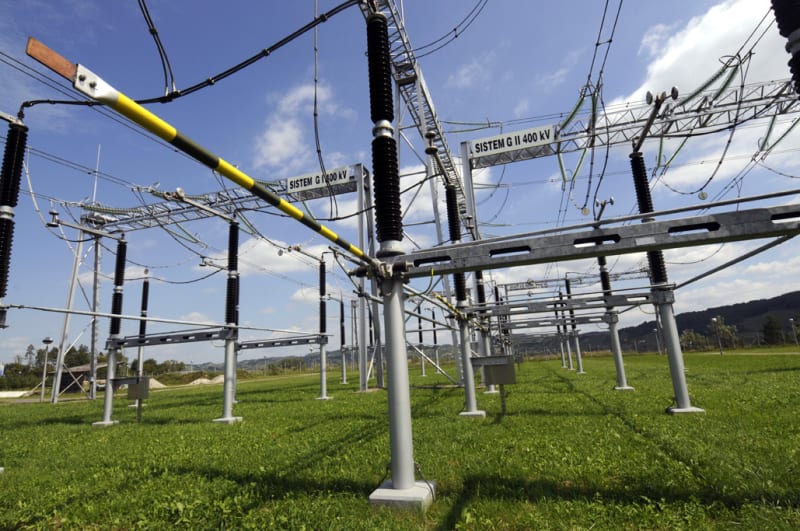
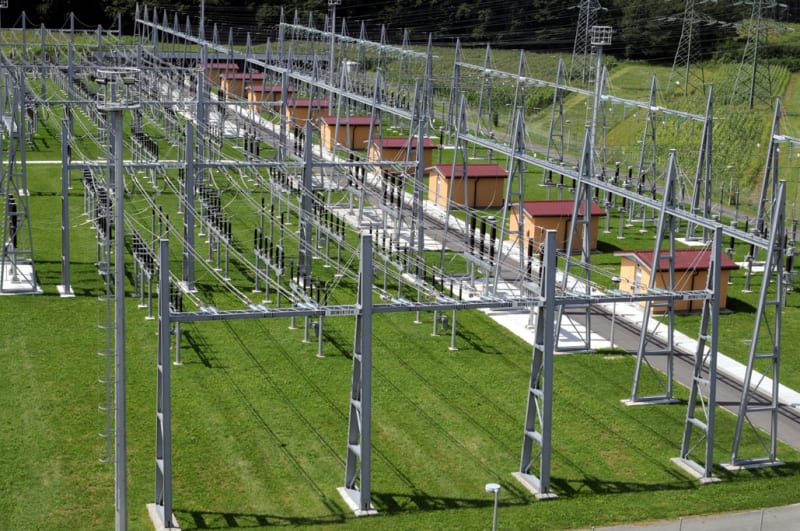
![[cow] [cow] [cow]](/data/assets/smilies/cow.gif)
